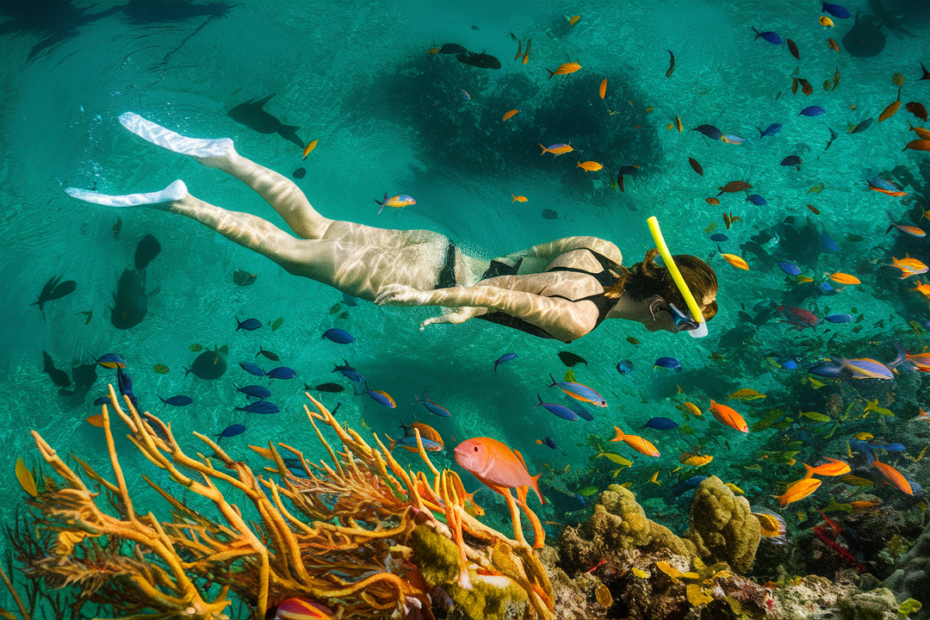Have you ever wondered how a simple tube allows you to breathe underwater while snorkeling? The science behind this popular water activity is both fascinating and ingenious. In this article, we’ll explore the inner workings of a snorkel and answer common questions about its functionality. You’ll discover how air pressure, water displacement, and human physiology combine to create an underwater breathing apparatus. Whether you’re a curious beginner or an experienced snorkeler, understanding the mechanics behind this essential piece of equipment will enhance your appreciation for the sport and potentially improve your underwater experience.
The Anatomy of a Snorkel: How It’s Designed
When you examine a snorkel, you’ll notice its seemingly simple yet ingeniously designed structure. The device consists of several key components working together to facilitate underwater breathing.
The Tube
The main body of the snorkel is a hollow tube, typically made from durable plastic or silicone. This tube extends from your mouth to above the water’s surface, allowing you to breathe while your face is submerged. The length and diameter of the tube are carefully calibrated to minimize dead air space and reduce breathing resistance.
The Mouthpiece
At the lower end of the tube, you’ll find the mouthpiece. Designed for comfort and secure fit, it’s usually made from soft, flexible material like silicone. The mouthpiece often features a bite tab to help you keep it in place while swimming.
The Top
The upper portion of the snorkel tube is crucial for its functionality. It may include a splash guard to prevent water from entering the tube, and some models feature a float valve that automatically seals the tube when submerged. Advanced designs might incorporate a purge valve at the bottom, allowing you to easily clear any water that enters the tube.
Using a Snorkel: Tips for Proper Technique
Positioning the Snorkel
Proper positioning is crucial for effective snorkeling. Attach the snorkel to the left side of your mask strap, ensuring it sits comfortably along your cheek. The mouthpiece should rest naturally between your teeth, with your lips sealed around it to prevent water entry. Adjust the angle so that the top of the snorkel is approximately vertical when you’re floating face-down in the water.
Breathing Technique
When using a snorkel, focus on slow, deep breaths through your mouth. Inhale steadily through the tube and exhale forcefully to clear any water that may have entered. Practice this technique in shallow water before venturing into deeper areas. Remember to remain calm and maintain a steady breathing rhythm to conserve energy and enhance your underwater experience.
Clearing Water from the Snorkel
Occasionally, water may enter your snorkel. To clear it:
- Lift your head above the surface
- Exhale sharply through your mouth
- Repeat if necessary
Some snorkels feature a purge valve at the bottom, which allows for easier clearing. Familiarize yourself with your equipment’s specific features for optimal performance.
How Does a Snorkel Work FAQ: Your Top Snorkeling Questions Answered
What is the purpose of a snorkel?
A snorkel is a breathing tube that allows you to breathe while your face is submerged in water. Its primary purpose is to enable you to observe underwater life for extended periods without lifting your head to breathe.
How deep can you go with a snorkel?
Typically, you can use a snorkel effectively at depths of up to 2 feet (60 cm) below the water’s surface. Beyond this depth, water pressure makes it challenging to breathe through the tube. For deeper exploration, scuba diving equipment is necessary.
Can water enter the snorkel tube?
Yes, water can enter the snorkel tube, especially when waves wash over it or if you dive below the surface. Most modern snorkels have a purge valve at the bottom to help expel water easily. Some advanced models feature a dry-top design that helps prevent water entry.
Is snorkeling safe for non-swimmers?
While basic swimming skills are recommended, non-swimmers can enjoy snorkeling with proper safety measures. Using a life jacket or floatation device, staying in shallow water, and snorkeling with a buddy can make the activity safer for those less confident in the water.
Conclusion
As you’ve discovered, the science behind snorkeling is both simple and ingenious. By understanding how snorkels function, you can appreciate this remarkable tool that allows you to explore underwater worlds with ease. Remember that proper technique and safety precautions are essential for an enjoyable snorkeling experience. Whether you’re a beginner or an experienced snorkeler, knowing the mechanics behind your equipment enhances your underwater adventures. So the next time you don your mask and snorkel, take a moment to marvel at the clever design that lets you breathe comfortably while immersed in the fascinating marine environment. Happy snorkeling, and may your underwater explorations be safe and awe-inspiring!



